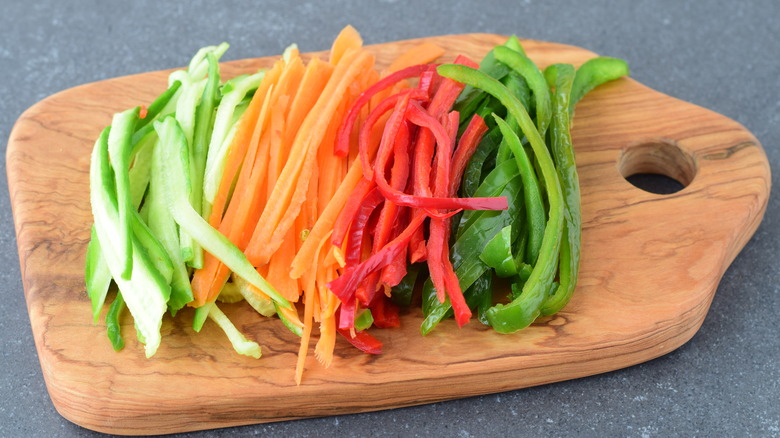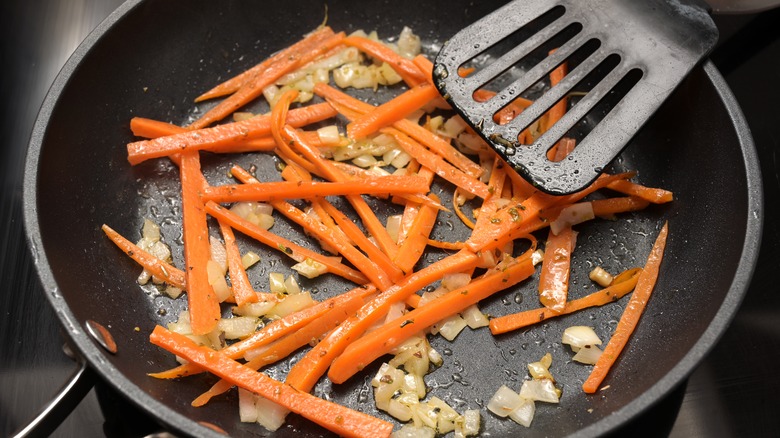What Is A Julienne Cut And When Is It Best Used?
Learning how to cut fruits and vegetables is one of the first lessons chefs have to master during their training — and the same should be said for those of you who are learning to cook at home. While you won't be expected to dice your food into measured pieces (via New York Times Cooking), getting your knife techniques down will help you avoid kitchen injuries and speed up the prep time of your meals. Along with the main methods like slicing, dicing, and mincing, the Julienne cut is an important technique to master.
As a French term (via Fine Cooking), the Julienne cutting technique sounds ultra fancy, but it's actually a very simple way to divvy your food. The cut divides ingredients into long, thin, uniform strips — about a 16th to an eighth of an inch thin and two to three inches long. The result gives you flat, trimmed slices of fruits and veggies that are the perfect vehicle for your favorite dip recipe. However, the Julienne cut has many more uses than you might think— from the garnish on your pad thai to stir fries and salads.
Best uses
Whether your cuts are toothpick-thin or not, chances are you've been Julienne cutting your food already without even realizing. However, the Julienne has a variety of uses that go beyond eating raw veggies, and there are other more creative ways to implement this method into your recipes. According to A Life of Mastery, one of those ways is marinating. No matter if you're using meat or vegetables, the thin style of the Julienne cut allows the marinade to reach the core of your ingredients, fully infusing its flavor into every single bite you take — all while saving you precious time.
As you may know from experience, when you cut your ingredients into smaller pieces, they cook faster. A Life of Mastery explains that this happens because thermal transfer increases with the number of points of contact that the food has with the pan. So, when you Julienne your ingredients into dozens or more pieces, those points multiply, decreasing the amount of time you'll spend cooking them. This makes the Julienne cut great for longer-cooking veggies like potatoes and carrots, and it means you'll be able to achieve that nice, even browning across each and every piece — no matter if you're grilling your vegetables or air-frying.

